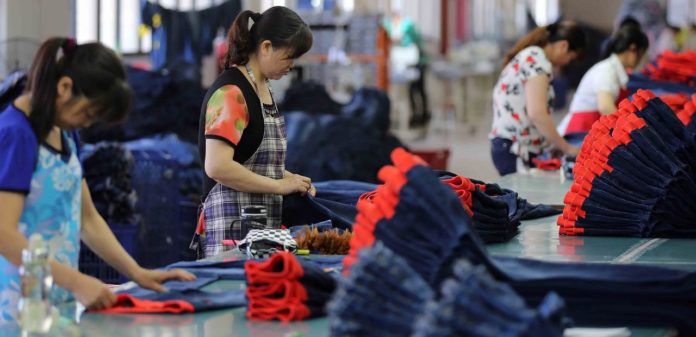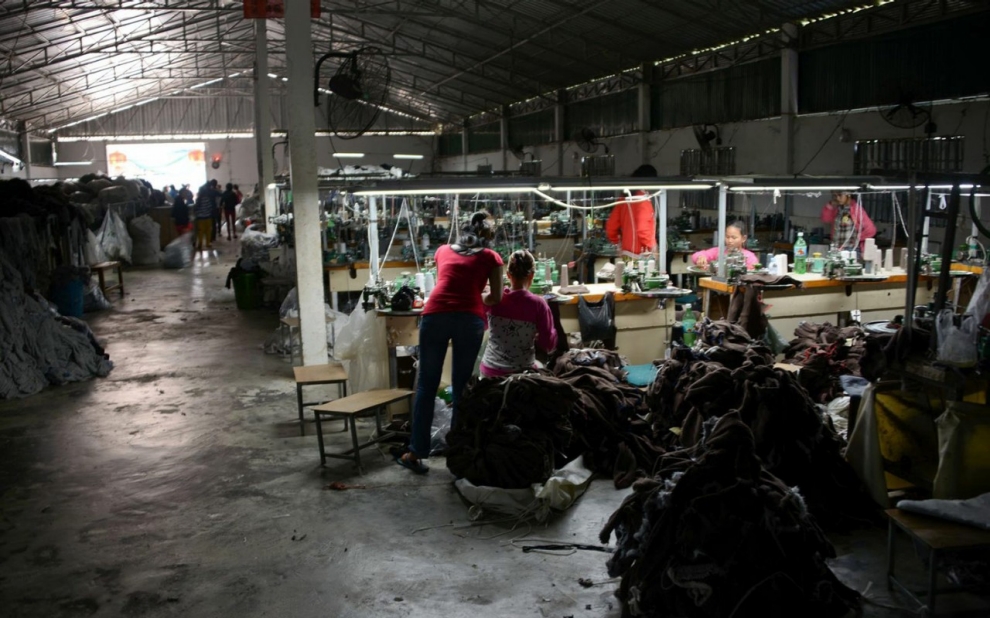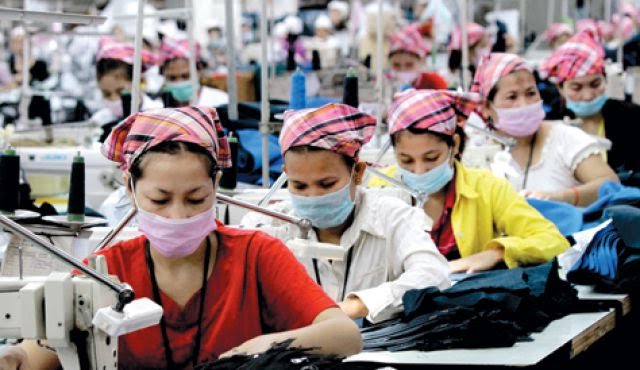
Behind every successful clothing brand is a woman — albeit deprived, underpaid, exploited and abused.
In 2015, the United States imported close to $88 billion worth of apparel; in comparison, the country exported just over $6 billion worth of apparel, last year. While 97% of clothing sold in the United States is imported, not many Americans know where they get their clothes from, or the conditions in the countries that make the expensive and not-so-expensive attires for brands like Adidas, Armani, Gap, H&M, Joe Fresh, Marks and Spencer, and hundreds of others.
The truth is, docile women — who make about 80% of the garment workers’ population worldwide — labor under poor conditions, receiving low pay, making the clothes you and I flaunt.
Forced Overtime
Women staff are pushed to work between 10 and 12 hours, sometimes 16 to 18 hours a day. A seven-day working week is becoming the norm during the peak season, particularly in China, despite limits placed by the law. Liana Foxvog, director of organizing and communications at the International Labor Rights Forum, told Mic: “Factory owners prefer to hire female workers because they believe that not only are they better suited for sewing with their smaller hands, but that they’re also more docile and, therefore, willing to work longer hours for less pay, without organizing or trying to change their conditions.”
Low Wages
Women in El Salvador are paid just 29 cents for each $140 Nike NBA jersey they sew. Brands such as H&M can sell hoodies for as little as $25, because Cambodian garment workers (90% women) will sew for about 50 cents per hour. Workers in China (75% women) are paid 42 cents an hour. Female garment workers in Bangladesh (85% of the country’s 4 million garment workers) earn about $68 a month. Non-compliance is severely dealt with. In January 2014, police, gendarmes, and army troops brutally crushed industry-wide protests in Cambodia for a higher minimum wage.
Pregnancy-related Discrimination
The 2015 Human Rights Watch report — based on interviews with 270 workers from 73 factories in Cambodia, as well as international apparel brand representatives — found that a Gap factory allegedly discriminated against pregnant workers in hiring; did not give maternity pay; dismissed a pregnant woman for refusing overtime work; and offered no infirmary or nurse in the campus. Many interviewees said workers often resigned from factories as their pregnancy progressed because managers harassed them for being “slow” and “unproductive.”
Sexual Harassment
Managers at some factories, the HRW investigation discovered, used sexually charged words such as “prostitute” and “slut” to demean women workers at the workplace, especially when they were pregnant or perceived as slow.
“The managers say things with sexual connotations — “I want to kiss you. I want to sleep with you for just one night”. Sometimes even male workers at our level speak to us like this. They will touch our hair, hands, or other parts of our body. If we say anything they will laugh and say “Oh, we just touched you a little bit — why do you mind?”
How Are Brands Responsible?
According to Human Rights Watch, many international clothing brands have failed to promote workers’ rights because of poor supply chain transparency, the absence of protection for whistleblowers, and a failure to help factories correct problems. Senior women’s rights researcher at HRW, Aruna Kashyap, told Swedish broadcaster SVT:
“Some of the worst employment-related crimes happen at the larger factories’ smaller suppliers. The reason is that nobody really investigates them. These global apparel brands are household names. They have a lot of leverage, and can and should do more to ensure their contracts with garment factories are not contributing to labor rights abuses.”
When it comes to accountability for brands, writes Huffington Post, American clothing manufacturers often hire “mega suppliers” to coordinate with subcontractors; and so they are usually unaware of which factories their clothes were made in — or even which countries. With brands miles away from the workers, calls for higher wages or better working conditions, often don’t reach the right ears.
But is the excuse enough to shed their responsibilities?
To ensure accountability and inform consumers of whether they are investing sufficiently to ensure that workers are not exploited in their supply chains, Baptist World Aid in April graded clothing manufacturers on a scale of A to F. Zara and H&M received an A and B+. Kmart was graded with a B. Factory X, which owns the Australian clothing brand Gorman, received an F.
After the deadly garment factory collapse in Bangladesh killed more than 1,100 people, plenty of American clothing retailers came forward with promises to look into the terrible conditions of its employees in garment factories worldwide. Three years later, investigations from the International Labor Rights Forum and Human Rights Watch have forced global brands including Nike, H&M and Patagonia to pay attention to workers’ wages and location of their factories. However…
New report finds garment workers still facing serious issues in terms of living & working conditions https://t.co/XQIJdNwvjs
— FashionRevolution (@Fash_Rev) February 9, 2016
This article (How Your Favorite Clothing Brands Oppress Women Workers to Make Your Clothes) is a free and open source. You have permission to republish this article under a Creative Commons license with attribution to the author and AnonHQ.com.







but rich white women in america dont give a fuck about women of color cuz neoliberal feminazis are abunch of racist cunts
Which is why intersectionality is so important, and you’d know this if you ever did any research on real feminism. But yeah, it’s hard to sympathize from a gilded cage, true. Out of sight out of mind, as it were. Also to believe only women are feminists is just laughable. Check yourself, dude.